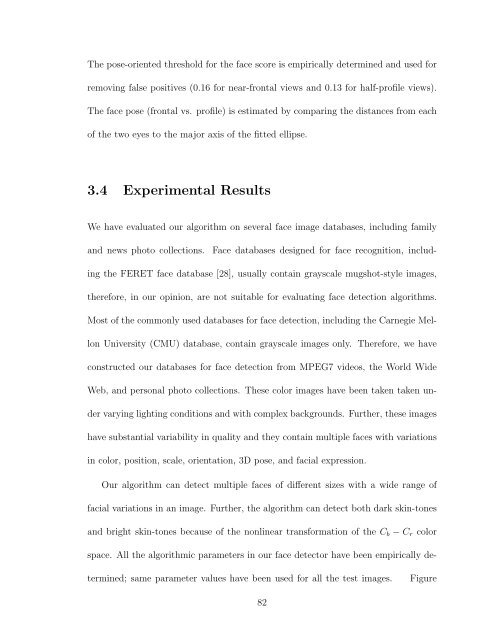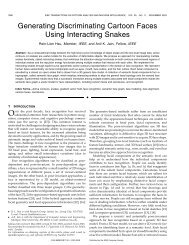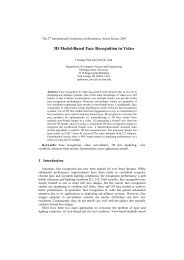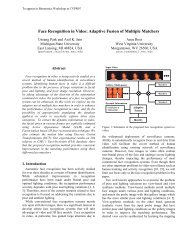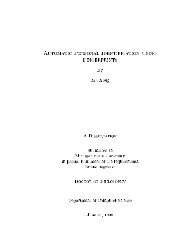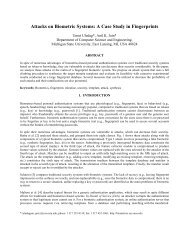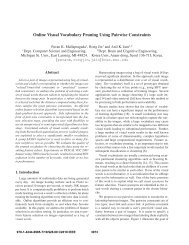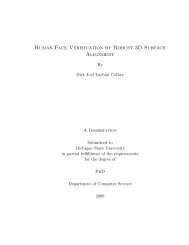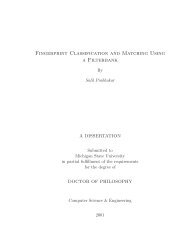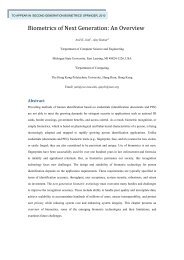Face Detection and Modeling for Recognition - Biometrics Research ...
Face Detection and Modeling for Recognition - Biometrics Research ...
Face Detection and Modeling for Recognition - Biometrics Research ...
Create successful ePaper yourself
Turn your PDF publications into a flip-book with our unique Google optimized e-Paper software.
The pose-oriented threshold <strong>for</strong> the face score is empirically determined <strong>and</strong> used <strong>for</strong><br />
removing false positives (0.16 <strong>for</strong> near-frontal views <strong>and</strong> 0.13 <strong>for</strong> half-profile views).<br />
The face pose (frontal vs. profile) is estimated by comparing the distances from each<br />
of the two eyes to the major axis of the fitted ellipse.<br />
3.4 Experimental Results<br />
We have evaluated our algorithm on several face image databases, including family<br />
<strong>and</strong> news photo collections.<br />
<strong>Face</strong> databases designed <strong>for</strong> face recognition, including<br />
the FERET face database [28], usually contain grayscale mugshot-style images,<br />
there<strong>for</strong>e, in our opinion, are not suitable <strong>for</strong> evaluating face detection algorithms.<br />
Most of the commonly used databases <strong>for</strong> face detection, including the Carnegie Mellon<br />
University (CMU) database, contain grayscale images only. There<strong>for</strong>e, we have<br />
constructed our databases <strong>for</strong> face detection from MPEG7 videos, the World Wide<br />
Web, <strong>and</strong> personal photo collections. These color images have been taken taken under<br />
varying lighting conditions <strong>and</strong> with complex backgrounds. Further, these images<br />
have substantial variability in quality <strong>and</strong> they contain multiple faces with variations<br />
in color, position, scale, orientation, 3D pose, <strong>and</strong> facial expression.<br />
Our algorithm can detect multiple faces of different sizes with a wide range of<br />
facial variations in an image. Further, the algorithm can detect both dark skin-tones<br />
<strong>and</strong> bright skin-tones because of the nonlinear trans<strong>for</strong>mation of the C b − C r color<br />
space. All the algorithmic parameters in our face detector have been empirically determined;<br />
same parameter values have been used <strong>for</strong> all the test images.<br />
Figure<br />
82


